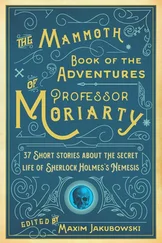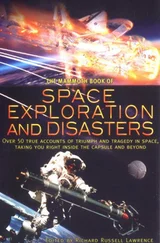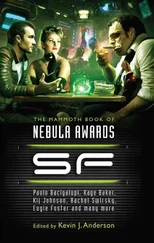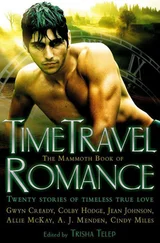In 2007 NASA is sending a lander named Phoenix and the ESA is considering a plan to refly Beagle 2, possibly as a pack of four or five landers to ensure maximum chances of success.
Two years afterwards, both agencies want to send large rover missions to the planet – NASA’s Mars Science Laboratory and the ESA’s ExoMars which would seek signs of life and test for hazards to future human pioneers.
The agencies are following identical timetables for sample return: in 2011, a “return vehicle” would be launched and parked in orbit around Mars waiting for a second mission in 2014. This would land on the planet, then blast off into orbit to dock with the waiting orbiter and return home.
Both agencies see manned missions to the Moon as essential precursors to sending astronauts to Mars: the ESA envisages a human Moon mission in about 2024 while NASA wants to establish a permanent lunar base at the same time. The earliest likely date for a manned mission to Mars is 2030. The European “road map” was presented by Franco Ongaro, the Aurora mission’s project manager at a London conference held to consider Britain’s contribution.
The Government is likely to support the project, even though it does not yet back manned spaceflight. Aurora is structured to allow countries to opt in for five years at a time, so Britain would be able to drop out when the manned phase begins. The initial five year budget has been set at €900 million (£615 million) and British scientists want the Government to contribute £30 million a year. It spends about £180 million annually on civilian space exploration.
Dr Ongaro played down the notion that the ESA and NASA were embarking on a fresh space race, but insisted that Europe was just as well placed as the US to lead worthwhile missions to Mars.
He said that the Aurora budget was comparable to NASA’s expenditure on long-term Mars exploration and that both would have to overcome similar technical challenges. “Neither us nor the Americans know at the moment how a mission to the Moon or to Mars can be done,” he said. “For the next five years both NASA and ourselves are going to be working on exactly the same thing: how to do it. We intend to have a programme of the same type and scale as theirs.”
He said that unmanned probes, sample return and manned Moon landings would be essential before a manned mission. “We need to evolve these before taking the risk with humans. We need to learn to walk before we can run.”
Professor Colin Pillinger, Beagle 2’s chief scientist, said Britain should sign up to the first stage of Aurora, which offers focus on unmanned exploration of Mars. “The initial stages have my wholehearted support. Let’s wait and see about the later stages, when we ask humans to do the fieldwork rather than robots.”
The 2009 ExoMars rover and the 2011–14 Mar’s Sample Return (MSR) missions are Aurora’s “flagship” projects, which will be confirmed as soon as funding is made available by member states. EADS Astrium, the British satellite company that built Beagle 2, has won contracts to develop the concepts for both missions.
ExoMars is likely to be a six-wheel rover similar to Spirit and Opportunity but with a longer range and instruments that can look for past and present life. NASA’s rovers are designed only to search for mineral evidence of water. An attached orbiter would test a docking system for sample return effectively throwing out a capsule and capturing it again, to prove it can be done far from Earth.
MSR would be much more ambitious, aiming to bring 500 grams of Mars rocks back to Earth for analysis. This would allow much more complex experiments to be performed than would be possible with a robotic probe alone. Professor Pillinger said such a sample would contain about a billion grains of 50 microns.
Professor Pillinger added:
“As modern geo-scientists can treat a grain this size as a rock, it could keep all the geoscientists in Europe happy for some time.”
Smart 1: the Star Trek propulsion system
On 18 August 2003, the European Space Agency (ESA) announced that “Europe was to send a spacecraft to the moon”.
The unmanned craft would be powered by a revolutionary engine which has been called the Star Trek propulsion system. ESA’s Smart 1 spacecraft forms part of its “Small Missions for Advanced Research in Technology” (SMART) project, the purpose of which is to test new technologies that will eventually be used on bigger projects.
The European Space Agency (ESA) Smart 1 spacecraft was launched on 4 September 2003 from French Guiana. It carried a British-built sensor to analyse the lunar surface and scientists hope it will answer questions about how the moon was created. The mission could also confirm the suspected existence of water beneath the lunar surface.
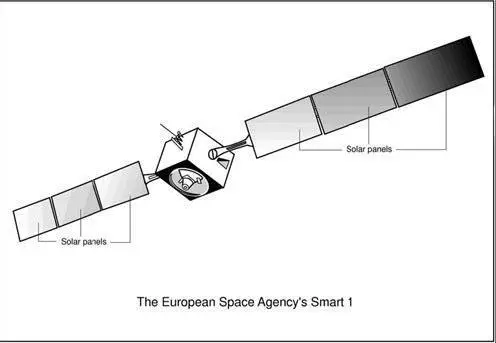
The key to the mission is a new development known as an ion engine. This “Star Trek propulsion system” is much smaller than other spacecraft engines and uses solar panels to charge electrically heavy gas atoms, which propel the craft forward as they are pushed away at high speed.
The ion engine begins very slowly, its thrust barely as strong as the force a postcard would produce as it falls through the air. But over long periods of time it can generate much more power and produce high speeds.
Scientists hope it could one day allow manned missions to faraway stars. Guiseppe Racca, the Smart 1 project manager at ESA, said:
“This engine opens up a whole new era of exploration.”
The one-square-metre craft will take 18 months to reach the moon and will then swoop to within 300km of the lunar surface, using its array of sensors and cameras to analyse the lunar surface.
Scientists hope the mission will finally end a row over where the moon came from. Analysing the lunar surface should allow them to tell if the moon is, as they suspect, the remnant of a massive collision between a young Earth and another planet.
If this theory is correct, the moon should contain less iron than Earth, something Smart 1’s D-CIXS sensor developed at the Rutherford Appleton Laboratory in Hampshire can spot.
Bernard Foing, a scientist on the project at ESA, said:
“We’ll be able to make the first comprehensive inventory of chemical elements in the lunar surface. We’ll also carry a multi-colour camera, so we will get some new views of the moon.
“As the moon is effectively the daughter of the Earth, we should also get some indications of the early conditions here.”
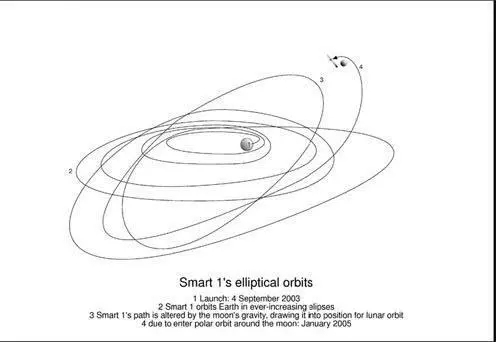
While conventional rocket engines use vast amounts of fuel, and can only run for short periods of time, ion engines use very little propellant. NASA has been running an experimental ion engine continuously for five years.
Although NASA has already launched a space probe using ion engines, the ESA project will test several advances in technology, and also be far more manoeuvrable than NASA’s craft.
Smart 1 should gradually accelerate from 0 to 70,000 mph. At its slowest, the craft travels at 0.2mm per second – slower than a snail – but over several years this increases to speeds of up to 70,000 mph.
The Smart 1 craft weighs about 367kg, less than a small family car. It is no more than a metre square at launch (the size of a washing machine) but extends to the length of three delivery vans. The initial push created by the ion engine feels no more powerful than having a postcard dropped onto your hand. Smart 1 will get to within 300km of the moon’s surface, far closer than previous orbiting probes.
Читать дальше



